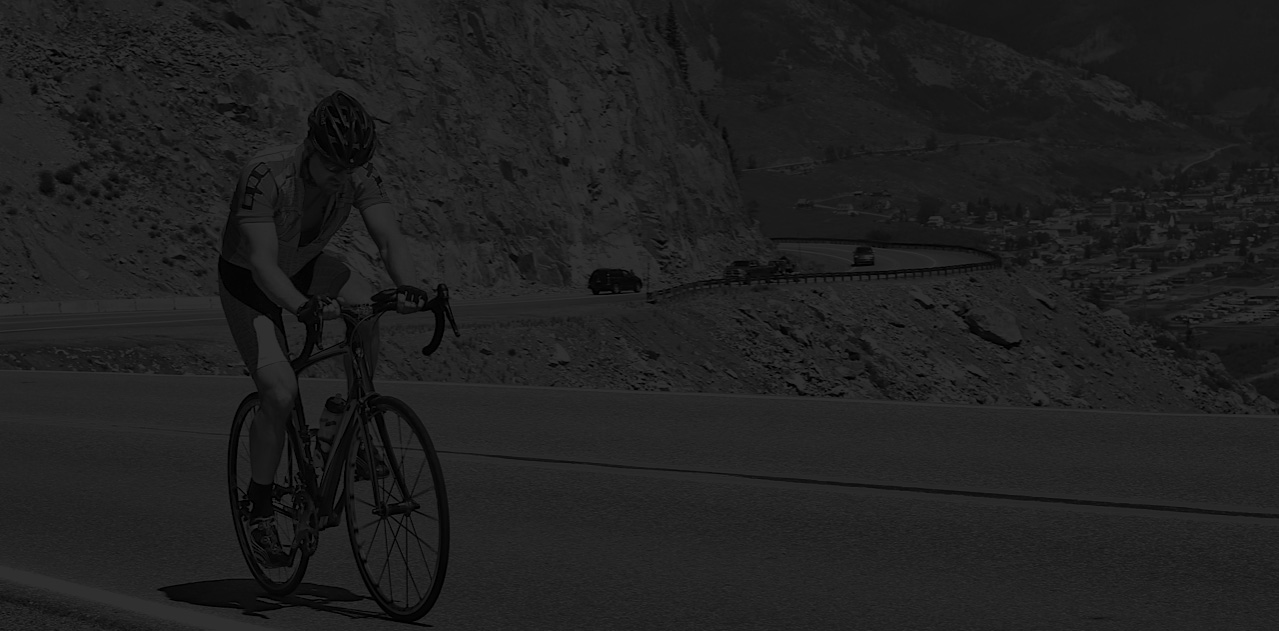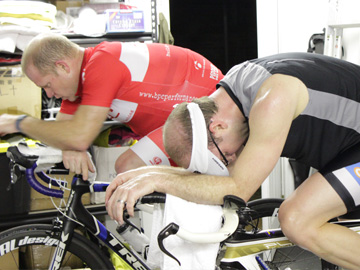Performance Enhancing Content
Let's get at it today!


Let's get at it today!


0.00%
Functional threshold, in the easiest terms, is the max "output" you can achieve over a roughly 60 minute period. For those with a power meter, it is measured in watts. For those with a heart rate monitor, it's beats per minute. Your threshold is a very valuable number to know and is what should be used to base all of your training zones off of. As you exercise, your body begins to produce blood lactate. Up to a certain point, your bodies ability to clear this blood lactate is greater than the rate with which the body is producing the blood lactate. As exercise intensity increases, so does the rate of blood lactate production. At the point just below where rate of production is faster that rate of clearance, you will find your "functional threshold." As intensity continues to increase, your body begins to transition from an aerobic to an anaerobic energy source, and this greatly decreases the amount of time your body can continue to perform that intensity level without recovering. In cycling, increasing your ability to produce higher power at threshold will greatly increase your performance. Setting zones based off of threshold will make sure you are training the energy systems you are wanting to in order to make this happen.
Next
In order to make sure you are maximizing your training and your potential, it's always great to re-test and adjust every 4-6 weeks. Not having correct zones is a good way to under or over-train, neither of which is ideal for an athlete looking to increase performance. This does not always have to be a formal assessment like the one outlined below. If you compete in a really hard race where you are near or at your max for 30-60 minutes, you can use that data as well. They key is making sure you are resetting zones regularly based on progress.
Next
There are multiple ways you can "check" your threshold (hard group ride, race, etc), however we recommend you utilize the following assessment protocol each time you do an official re-test. [15 minute warm up]
[5 min VO2 effort]
[10 min recovery]
[20 min Threshold effort]
[Cool down and stretch]
Next
Next
Use your best average 20-30 min HR or 20 min average from your FTP test in the calculator below.
Next
Type your average 20 min power from your FTP test in the calculator below:
Next
1 - Active Recovery: "Easy spinning" or "light pedal pressure", i.e., very low-level exercise, too low in and of itself to induce significant physiological adaptations. Minimal sensation of leg effort/fatigue. Requires no concentration to maintain pace, and continuous conversation possible. Typically used for active recovery after strenuous training days (or races), between interval efforts, or for socializing. 2 - Endurance - "All day" pace, or classic long slow distance (LSD) training. Sensation of leg effort/fatigue generally low, but may rise periodically to higher levels (e.g., when climbing). Concentration generally required to maintain effort only at the highest end of the range and/or during longer training sessions. Breathing is more regular than at level 1, but continuous conversation still possible. Frequent (daily) training sessions of moderate duration (e.g., 2 h) at level 2 possible (provided dietary carbohydrate intake is adequate), but complete recovery from very long workouts may take more than 24 hrs. 3 - Tempo - Typical intensity of fartlek workout, 'spirited' group ride, or briskly moving paceline. More frequent/greater sensation of leg effort/fatigue than at level 2. Requires concentration to maintain alone, especially at the upper end of range, to prevent effort from falling back to level 2. Breathing deeper and more rhythmic than level 2, such that any conversation must be somewhat halting, but not as difficult as at level 4. Recovery from level 3 training sessions more difficult than after level 2 workouts, but consecutive days of level 3 training still possible if the duration is not excessive and dietary carbohydrate intake is adequate. 4 - Lactate Threshold - Just below to just above TT effort, taking into account duration, current fitness, environmental conditions, etc. Essentially continuous sensation of moderate or even greater leg effort/fatigue. Continuous conversation difficult at best, due to depth/frequency of breathing. Effort sufficiently high that sustained exercise at this level is mentally very taxing - therefore typically performed in training as multiple 'repeats', 'modules', or 'blocks' of 10-30 min duration. Consecutive days of training at level 4 possible, but such workouts generally only performed when sufficiently rested/recovered from prior training so as to be able to maintain intensity. 5 - V02 Max - Typical intensity of longer (3-8 min) intervals intended to increase VO2max. Strong to severe sensations of leg effort/fatigue, such that completion of more than 30-40 min total training time is difficult at best. Conversation not possible due to often 'ragged' breathing. Should generally be attempted only when adequately recovered from prior training - consecutive days of level 5 work not necessarily desirable even if possible. Note: At this level, the average heart rate may not be reliable due to delayed heart rate response and/or ceiling imposed by maximum heart rate. 6 - Anaerobic Capacity - Short (30 s to 3 min), high-intensity intervals designed to increase anaerobic capacity. Heart rate generally not useful as a guide to intensity due to non-steady-state nature of the effort and delayed heart rate response. Severe sensation of leg effort/fatigue, and conversation impossible. Consecutive days of extended level 6 training usually not attempted. 7 - Neuromuscular Power - Very short, very high-intensity efforts (e.g., jumps, standing starts, short sprints) that generally place greater stress on musculoskeletal rather than metabolic systems. Power useful as a guide, but only in reference to prior similar efforts, not TT pace. (These zone descriptions are taken from Andy Coggan, Ph.D., the man who literally wrote the book on training with power.)
Next
If you are on the mobile app, watch the first video. If you are on your computer browser, watch the second video.
Mobile App:
Computer Browser:
Complete Course